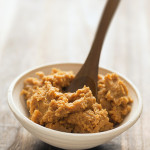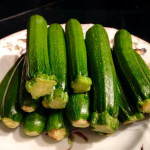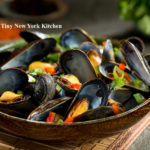“The difference between winning and losing is most often not quitting.” – Walt Disney
Miso
Miso is a highly concentrated fermented soybean paste, made from a combination of soybeans and grains such as rice or barley, miso is widely used in Japanese cooking – from sauces and soups to main dishes – and is made in different strengths, varying by color. Red miso has the strongest flavor, golden miso is fairly mild, and white miso is mellow and slightly sweet. Look for miso in health food stores and Asian markets.
“Work With What You Got!”
© Victoria Hart Glavin Tiny New York Kitchen
“The people who influence you are the people who believe in you.” – Henry Drummond
Chef Marco Pierre White (Great British Feast) Chapter 1
Baby Zucchini
Baby zucchini are very tender, tasty simple vegetables that have more flavor than the larger Italian zucchini as well as being very easy to prepare and enjoy. Archeologists think that they are indigenous to Central America. They are very nutritious and are a good source of Vitamin A, C B6, thiamin, niacin, and Pantothenic acid. Baby zucchini are also a very good source of fiber, protein, folate, iron, magnesium, phosphorus, zinc, and copper.
Quick Roast: Cut lengthwise and roast with sliced onions for 25 minutes at 350 degrees.
Blanching: Drop zucchini into boiling water for 1 to 2 minutes. Then remove to an ice bath. Zucchini are now ready to cut lengthwise and add to salads, sauté with mushrooms, onions, and garlic.
Grilling: Brush zucchini with olive oil, sprinkle with fresh herbs or spices, and either grill on BBQ or grill in a grill pan for about 2 to 3 minutes on each side.
Microwave: Place zucchini in ziplock bag. Cut corner of bag and microwave on high for 3 to 4 minutes.
For Salads: Baby zucchini makes a great salad addition. Shred or grate raw and add to salads, or cut lengthwise and add to vegetable platters.
Raw: To eat raw make sure to wash before eating.
“Work With What You Got!”
© Victoria Hart Glavin Tiny New York Kitchen
Life is too short for fake butter, cheese or people.
“I never dreamed about success. I worked for it.” – Estee Lauder
In case things get too hot, a teaspoon of sugar after eating something REALLY spicy will neutralize the heat sensation!
Look What Wonderful Biscotti Came In The Mail Today. Yum!!!! Made By Dolores A. Carbonaro Cervone.















